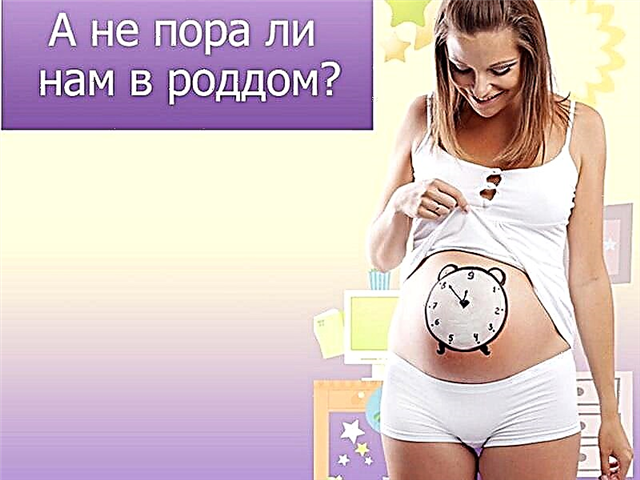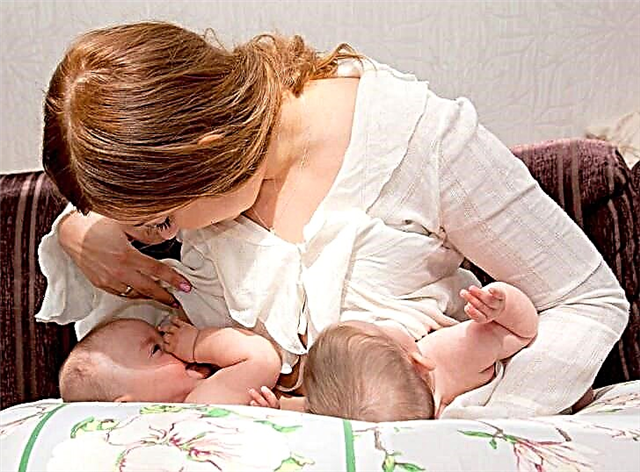
Diseases associated with deficiency conditions are common in children. Not only babies, but also older babies can get sick with them. Today we will talk about rickets in babies over one year old.
What it is?
Rickets is a childhood pathology associated with a pronounced violation of calcium-phosphorus metabolism. Various reasons lead to this pathological condition, causing lack of vitamin D or calciferol in the body. Normally, this biologically active substance participates in the internal exchange of calcium and phosphorus, which ensures normal concentrations of these substances.
Usually, early adverse signs of rickets appear in a child in the first months and within 1 year after birth. However, the disease is also recorded in children and at an older age.

According to statistics, children living in northern countries are more susceptible to this disease.
Boys get rickets as often as girls. A pronounced deficiency of vitamin D in a child's body leads to a violation of the exchange between calcium and phosphorus. Both of these substances provide bone strength. With impaired calcium-phosphorus metabolism, the child develops various adverse symptoms associated with a pronounced deficiency of biologically active substances.
Usually, the first signs of rickets are detected by a pediatrician during regular examinations of the baby. Diagnosis of the disease does not cause significant difficulties for medical specialists.


Causes
Various reasons lead to the development of the disease in babies, which contribute to a decrease in the level of calciferol. In some cases, the effect of the causes can be combined. It is very important to understand what causal factors caused the disease in the baby. Only the elimination of the cause of the disease will lead to the complete recovery of the child.
The peak incidence of rickets occurs in infancy. Usually, the first manifestation of rickets occurs within the first three months after the birth of the child. In some cases, with a mild course of the disease, clinical signs are not visible, which greatly complicates the diagnosis. In such a situation, the diagnosis is usually made only by the age of 2-3 years.


The most common reasons leading to a deficiency in the child's body of calciferol include:
- Inadequate intake of vitamin D from food... In babies under one year old, this leads to the rapid cancellation of breastfeeding. In older children, the cause of exogenous deficiency in calciferol intake is unbalanced and inadequate nutrition. The absence of animal products and vegetarian food can cause rickets in the baby.
- Accommodation in the northern regions. The lack of solar insolation leads to the fact that an insufficient amount of endogenous (internal) vitamin D is synthesized in the child's body. Exposure to the skin of ultraviolet rays causes a cascade of biological reactions in the baby that trigger the synthesis of calciferol.
Babies who live in countries with long winters and short daylight hours are statistically more likely to get rickets than their peers living in the south.


- Chronic diseases of the digestive system. The leading role is played by intestinal pathologies. Chronic enteritis, accompanied by a strong violation of the absorption of various substances from food, often leads to the formation of various deficiency states in babies. Without treatment of the underlying disease, in this case, it is impossible to cope with the unfavorable symptoms of rickets.
- Prematurity and congenital abnormalities. The birth of a baby earlier than planned is often a triggering reason for the development of rickets. This can be explained by the fact that the formation of many internal organs is not completed in a premature baby. Intrauterine growth disorders often become the cause of various health problems in the future.
Symptoms
The development of the disease undergoes several successive stages. The initial period of the disease is accompanied mainly by the appearance of vegetative disorders. This is manifested by disturbances in the behavior and mood of the baby. The child becomes nervous, easily irritated by little things. Kids lose interest in their favorite games, try to limit active movements. Usually the initial stage lasts about a month.


This period of the disease is also characterized by the appearance of a characteristic symptom - sweating increases in the child. Its smell also changes. Sweat becomes acrid, sour. Its abundant release on the skin contributes to the development of irritation and prickly heat. Babies often scratch the affected skin. The change in the smell of sweat is explained by a change in its chemical composition and its electrolytes due to impaired metabolism.
After the initial stage, the disease passes into the peak period. This is already a more unpleasant time, characterized by the appearance of numerous symptoms. The baby has the first deformations of the bone tissue. Basically, all tubular and flat bones that are actively growing are involved in the process. Diagnosis of the disease at this time is not difficult and does not pose a problem for the doctor.


The severity of clinical symptoms can be different.
A severe course of the disease in babies older than a year is quite rare.
The child has a characteristic curvature of the spine - scoliosis. The density and thickness of the clavicles changes. They step forward somewhat. The architecture of the structure of the chest is also violated.
The ribs are somewhat flattened, the intercostal spaces change. Some children develop characteristic signs of rickets: depression or bulging of the lower third of the sternum. Since ancient times, characteristic names for these states have been used - "Shoemaker's chest" and "chicken breast"... The child's appearance changes greatly. Usually these signs appear in babies who are diagnosed too late.


The shape of the lower limbs changes in the child. They become O- or X-shaped. Usually this symptom appears in babies with a pronounced course of rickets by the age of five. In order to identify this symptom, you should look at the baby from different angles. Usually, the curvature of the lower limbs is clearly visible from the side.
Also during the height of the disease hypotonia of muscles appears and various neuromuscular pathological conditions join. In a horizontal position, sick babies are well traced "Frog belly"... On examination, the baby's tummy becomes flattened and hangs somewhat to the lateral surfaces of the body. This symptom is due to the presence of pronounced hypotonia of the muscles that make up the anterior abdominal wall.


Bone deformities of the skeleton also lead to disturbances in the work of internal organs. Chest pathologies contribute to a decrease in the ventilation capacity of the lungs, which leads to the development of emphysema and other pathological conditions. Respiratory distress affects hemodynamics and vascular tone. Such combined conditions lead to the fact that the baby has problems in the work of the heart muscle and blood vessels.
The hypotension of the muscles of the abdominal wall and the pronounced curvature of the spine contribute to the compression of the internal organs. In some cases, this leads to abnormalities in the functioning of the liver and spleen. Bone tissue pathologies contribute to the development of numerous orthopedic diseases in the baby, which require appropriate treatment. On average, the peak period lasts several months.
Timely prescribed treatment helps to normalize the child's condition and improve his appearance.


The period of convalescence or recovery can be from 2 to 4 months. In some cases, it lasts up to six months. If a child has suffered severe rickets, then the residual symptoms of the disease may persist for a couple of years from the moment of convalescence. Usually they completely disappear after a course of rehabilitation measures.
Diagnostics
To identify signs of rickets in babies should be as early as possible. Timely diagnosis will help to avoid the development of long-term complications in the child and help to return the baby to an active life. The doctor can identify the very first signs of the disease and suspect rickets during regular examinations. After a clinical examination of the child, the doctor prescribes additional tests to clarify the severity of the violations and confirm the diagnosis.


The following studies are used to detect the disease:
- Measurement of calcium and phosphorus in the blood. Normally, the level of calcium should be - 2.5-2.7 mmol / l, and phosphorus - 1.3-2.3 mmol / l. A decrease in these indicators in a child below the age norm indicates the presence of signs of a violation of calcium-phosphorus metabolism.
- Determination of alkaline phosphatase... This enzyme is actively involved in the exchange between calcium and phosphorus. Normally, it is up to 200 U / l. An increase in this indicator indicates the presence of metabolic disorders in calcium-phosphorus metabolism.
- Radiography. Allows you to clarify the presence of bone deformities and disruption of the skeletal architecture caused by the disease. With the help of X-ray of the bones, it is possible to identify specific signs characteristic of rickets: "rickety bracelets", pathological curvature of the spinal column, "rickety rosary", chest pathologies, bone compaction in the tubular bones. This method can only be used under strict indications.
- CT scan. It is performed according to the same indications as bone tissue radiography. This method has a higher resolution and allows you to get the most accurate result. The use of computed tomography allows doctors to assess the level of damage and the degree of functional impairment.


Effects
The prognosis of the disease in babies is greatly influenced by the timely diagnosis and prescription of treatment. If rickets in a child was detected at the earliest stages, then negative complications of the disease, as a rule, do not arise. With a belated diagnosis, a baby may experience various long-term consequences of the disease, which require mandatory rehabilitation measures. The common consequences of rickets suffered in childhood include: a moderate decrease in muscle tone, slight curvature of the lower extremities, malocclusion, and others.
Treatment
Several therapeutic methods are prescribed to eliminate the adverse symptoms of the disease. Monitoring the effectiveness of the prescribed therapy is carried out with the obligatory determination of the calcium content in the blood. During the treatment, the child's clinical condition is also assessed. When prescribing therapy, the baby should feel better and become more active.

For the treatment of rickets in babies, the following treatment principles are applied:
- Regular walks in the fresh air. Sun insolation is necessary for a baby with rickets. Ultraviolet rays have a pronounced therapeutic effect on the child's body, increasing the internal synthesis of calciferol. The baby should take walks in the fresh air every day. Only regularity and consistency will allow you to achieve a good and lasting result.
- Prescribing drugs containing vitamin D. Many doctors prefer water-soluble forms. The dosage of the drug should be carried out by the attending physician individually for each baby.
Self-selection of the therapeutic dose is unacceptable! Such self-medication can contribute to the appearance of a very dangerous condition in the baby - an overdose of vitamin D.


- Good nutrition. Calciferol-rich foods must be present in the baby's daily diet. These include: meat, chicken, fish, eggs, milk and dairy products, cottage cheese, cheese. The kid must definitely eat a variety of dishes that contain vitamin D. If the child receives medications with calciferol, then the diet must be discussed with the attending physician in order to avoid an overdose of this vitamin in the child's body.
- Physiotherapy. The UFO (ultraviolet radiation) course helps babies suffering from rickets to improve overall health and increases bone density. It usually consists of 12-15 procedures. Their duration can be different: from 2 to 10 minutes. Physiotherapy has a number of contraindications and is prescribed by the attending physician.
For what rickets in children is and how to treat it, see the next video.



